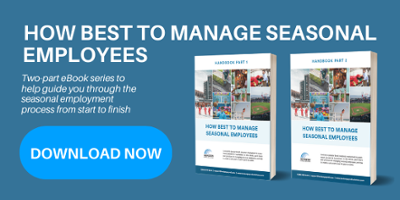22 Buzzwords and Acronyms used in the Payroll and Human Resource Industry
A
1. Affordable Care Act
If a company has over 50 full-time employees they are required to provide health benefits
2. Applicant Tracking
Database for job applicants that collects, scans, organizes then ranks them according to what the company sees as relevant.
3. At-Will Employment
Unlike most situations, in this one the employer is allowed to terminate an employee for any reason. Employees are also allowed to leave whenever they want with no legal consequences.
4. Attrition
Refers to the reduction of a workforce due to termination, retirement and death.
B
5. Broadbanding
Pay structure that pays people more equally through the company and has different position structure. The downfall of this is that there are significantly less promotion possibilities.
6. Bumping
The practice of keeping an older, experienced employee on the workforce if their position has been eliminated. Often times, they will be moved to one with less seniority.
D
7. Department of Labor Audit (DOL Audit)
Process of business investigation reviewing payroll as well as employee records and overall rights and conditions. This investigation confirms if the employer is abiding by the correct compensation laws.
E
8. Employee vs. Contractor
Employers withhold taxes from employees, not contractors. Contractors are responsible for their own.
9. Exempt / Non-exempt
Exempt employees are not entitled to overtime pay according to the Fair Labor and Standards Act (below). Meanwhile, non-exempt employees are paid by either hourly or salary.
10. Exit Interview
Interview at the end of employment done by HR to get their honest thoughts and opinions before leaving the company.
F
11. Fair Labor and Standards Act (FLSA)
Federal standard for minimum wage, overtime and youth employment. Establishes that anyone working over 40 hours per week is entitled to 1.5x their wage.
12. Fair Work Scheduling
Typical requirement of employers to provide a work schedule two weeks before the actual work day. Often used when referencing "Predictive Scheduling".
13. Family Medicare Leave Act (FMLA)
Federal law put in place requiring employers to continue to pay their employees for qualified family or medical reasons.
14. Freedom of association
Reserves the right for people to join or leave any group of their own choosing. The group [union] has the right to take action in the member's interests.
H
15. Hawthorne Effect
Experiment observation from Elton Mayo noting how employee productivity increases when there is someone watching them and evaluating them.
I
16. I-9 Form
Used to identify the employment authorization for those hired in the US.
17. Internal Revenue Service (IRS)
Federal agency that tracks the collection of taxes and enforces tax law.
J
18. Joint Employment
The sharing of supervision over an employee by two different business entities. There are various laws that define what exactly this relationship looks like.
O
19. Outsourcing
One company hires another to complete an activity that the company could do internally, but chooses not to. Often used when there is a shortage of internal labor.
R
20. Retention Strategy
Process put in place to make sure employees stay with a company. This can help mitigate extra onboarding costs by placing some emphasis on employee goals, not just the organization's.
T
21. Tax Credit
Money one can subtract out of their money owed to the government when spent on qualifying expenses.
W
22. Work Opportunity Tax Credit (WOTC)
Federal tax credit available to employers to hire individuals from targeted groups that historically faced barriers to gaining employment status.


 HR Support
HR Support Time & Attendance
Time & Attendance Hiring & Onboarding
Hiring & Onboarding
